 W
WHans Aumeier was an SS commander during the Nazi era who was the deputy commandant of Auschwitz concentration camp. One of the most important criminals at Auschwitz, he was extradited to Poland where he was convicted and sentenced to death. Aumeier was executed in 1948.
 W
WRichard Baer was a German SS officer who, among other assignments, was the commandant of Auschwitz I concentration camp from May 1944 to February 1945, and right after, from February to April 1945, commandant of Mittelbau-Dora concentration camp. Following the war, Baer lived under an assumed name to avoid prosecution but was recognized and arrested in December 1960. He died in detention before he could stand trial.
 W
WStefan Baretzki was an Auschwitz guard of Bukovina German origin. He was conscripted into the Waffen-SS and stationed at the Auschwitz concentration camp from 1942 until 1945. There he participated in mass murder by making selections and beat and murdered prisoners on his own initiative. After the war, Baretzki settled in West Germany. He was the lowest-ranking of the twenty-four defendants in the Frankfurt Auschwitz trials. His murders were sensationalized in the German press, taking the focus off of the systematic crimes of the Nazi regime. The court sentenced him to life imprisonment and eight years for participating in the murder of more than 8,000 people. Baretzki expressed regret for his actions, testified against his former superiors, and committed suicide in prison.
 W
WKarl Bischoff was a German architect, engineer and SS-Sturmbannführer. He served at Auschwitz as chief of the Central Construction Office of the Waffen-SS. While there he was chief of construction of the Auschwitz II-Birkenau camp.
 W
WAugust Raimond Bogusch was an SS-Scharführer and member of staff at Auschwitz concentration camp. He was prosecuted at the Auschwitz Trial, sentenced to death and hanged.
 W
WJuana Bormann was an East Prussian-born prison guard at several Nazi concentration camps from 1938, and was executed as a war criminal at Hamelin, Lower Saxony, Germany, after a court trial in 1945.
 W
WTherese Brandl was a Nazi concentration camp guard.
 W
WPerry Broad, also Pery Broad was a Brazilian non-commissioned officer SS-Unterscharführer, active at Auschwitz from April 1942 to 1945 as a translator and stenographer at the Auschwitz headquarters.
 W
WCarl Clauberg was a German gynecologist who conducted medical experiments on human subjects at Auschwitz concentration camp. He worked with Horst Schumann in X-ray sterilization experiments at Auschwitz concentration camp.
 W
WLuise Danz was a Nazi concentration camp guard in World War II. She was born in Walldorf (Werra) in Thuringia. Danz was captured in 1945 and put on trial for crimes against humanity at the Auschwitz trial in Kraków, Poland. She was sentenced to life imprisonment in 1947, but released due to general amnesty on August 20, 1957.
 W
WErich Adam Oskar Dinges was an SS-Sturmmann and member of staff at Auschwitz concentration camp. He was prosecuted at the Auschwitz Trial.
 W
WKlaus Hubert Hermann Dylewski was a German Volksdeutsche with Polish citizenship and SS-Oberscharführer who perpetrated acts of genocide at Auschwitz concentration camp.
 W
WHerta Ehlert was a female guard at many Nazi concentration camps during the Holocaust.
 W
WFriedrich Karl Hermann Entress was a German camp doctor in various concentration and extermination camps during the Second World War. He conducted human medical experimentation at Auschwitz and introduced the procedure there of injecting lethal doses of phenol directly into the hearts of prisoners. He was captured by the Allies in 1945, sentenced to death at the Mauthausen-Gusen camp trials, and executed in 1947.
 W
WHorst Paul Silvester Fischer was a German doctor and member of the SS, executed by guillotine in East Germany for crimes committed at Auschwitz-Birkenau concentration camp during World War II.
 W
WKarl Fritzsch was a German member of the Nazi secret police Schutzstaffel from 1933-1945. He was a deputy- and an acting-commandant at the Auschwitz concentration camp. According to Rudolf Höss, Fritzsch first suggested using poisonous gas Zyklon B for the purpose of mass murder.
 W
WKarl Franz Gebhardt was a German medical doctor and a war criminal during World War II. He served as Medical Superintendent of the Hohenlychen Sanatorium, Consulting Surgeon of the Waffen-SS, Chief Surgeon in the Staff of the Reich Physician SS and Police, and personal physician to Heinrich Himmler.
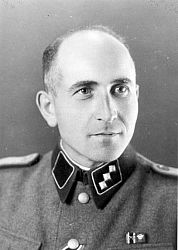 W
WMaximilian Grabner was an Austrian Gestapo chief in Auschwitz. At Auschwitz, the infamous torture chamber Block 11 was Grabner's own empire. He was executed for crimes against humanity.
 W
WIrma Ida Ilse Grese was an SS guard at the Nazi concentration camps of Ravensbrück and Auschwitz, and served as warden of the women's section of Bergen-Belsen.
 W
WKarl-Friedrich Höcker was a Nazi war criminal, German commander in the SS and the adjutant to Richard Baer, who was a commandant of Auschwitz I concentration camp from May 1944 to December 1944. In 2006, a photo album created by Höcker, with some 116 pictures from his time at Auschwitz, was given to the United States Holocaust Memorial Museum, sparking new interest in his activities as a concentration camp administrator.
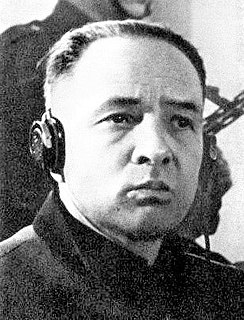 W
WRudolf Franz Ferdinand Höss was a German SS officer during the Nazi era who, after the defeat of Nazi Germany, was convicted for war crimes. Höss was the longest-serving commandant of Auschwitz concentration and extermination camp. He tested and implemented means to accelerate Hitler's order to systematically exterminate the Jewish population of Nazi-occupied Europe, known as the Final Solution. On the initiative of one of his subordinates, Karl Fritzsch, Höss introduced the pesticide Zyklon B to be used in gas chambers, where more than a million people were killed.
 W
WFranz Hößler, also Franz Hössler was a Nazi German SS-Obersturmführer and Schutzhaftlagerführer at the Auschwitz-Birkenau, Dora-Mittelbau and Bergen-Belsen concentration camps during World War II. Captured by the Allies at the end of the war, Hößler was charged with crimes against humanity in the First Bergen-Belsen Trial, found guilty, and sentenced to death. He was executed by hanging at Hameln Prison in 1945.
 W
WJosef Klehr was an SS-Oberscharführer, supervisor in several Nazi concentration camps and head of the SS disinfection commando at Auschwitz concentration camp.
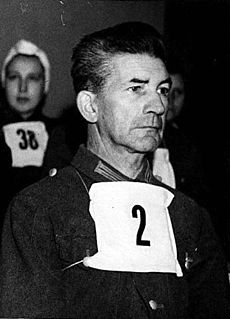 W
WFritz Klein was a German Nazi doctor and war criminal, hanged for his role in atrocities at Bergen-Belsen concentration camp during the Holocaust.
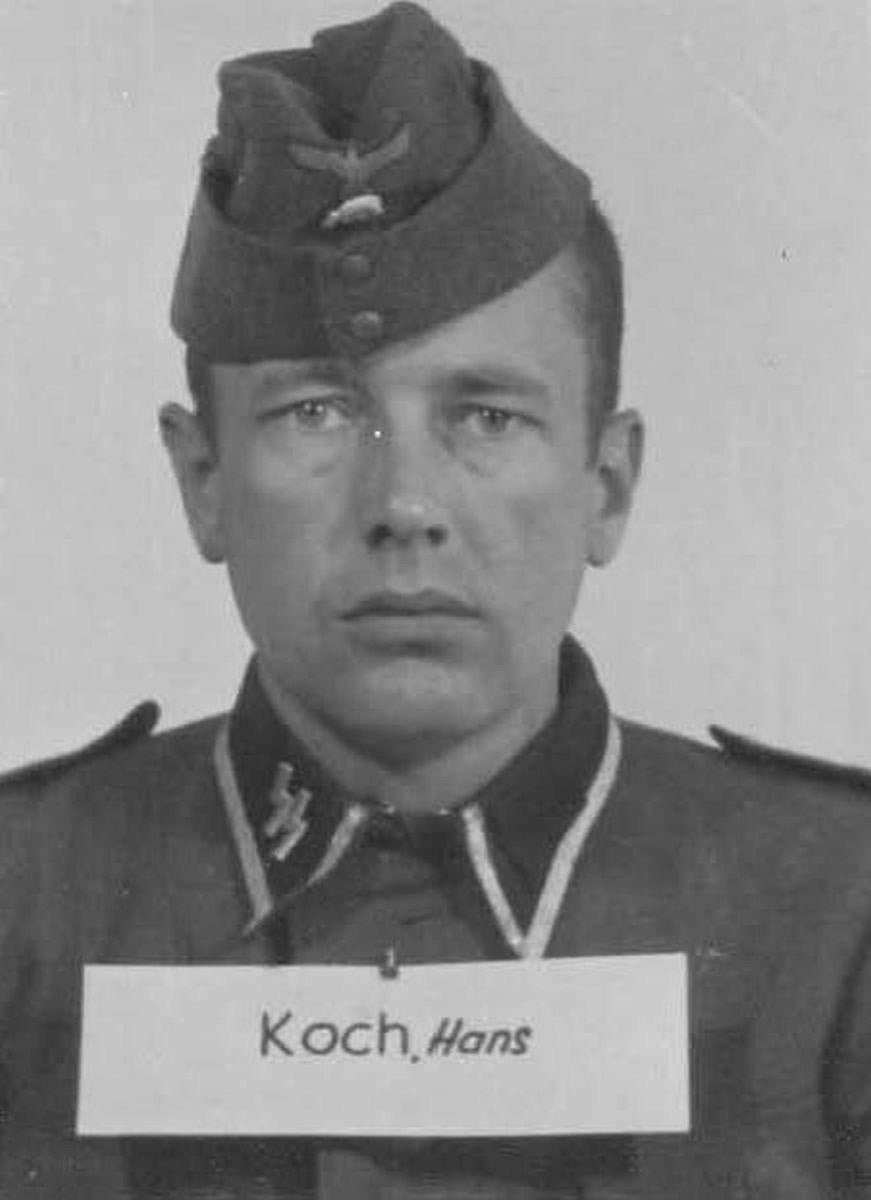 W
WHans Koch was an SS-Unterscharführer and member of staff at Auschwitz concentration camp. He was prosecuted at the Auschwitz Trial.
 W
WJosef Kollmer was a German SS functionary during the Nazi era who committed mass murder at Auschwitz. He was prosecuted at the Auschwitz Trial.
 W
WJosef Kramer was the Commandant of Auschwitz-Birkenau and of the Bergen-Belsen concentration camp. Dubbed the Beast of Belsen by camp inmates, he was a German Nazi war criminal, directly responsible for the deaths of thousands of people. He was detained by the British Army after the Second World War, convicted of war crimes and hanged on the gallows in the prison at Hamelin by British executioner Albert Pierrepoint.
 W
WEduard Krebsbach was a former German physician and SS doctor in the Nazi concentration camp in Mauthausen from July 1941 to August 1943. He was executed for crimes against humanity committed at the Mauthausen camp.
 W
WJohann Paul Kremer was a professor of anatomy and human genetics at Münster University who joined the Wehrmacht on May 20, 1941. He served in the SS in the Auschwitz concentration camp as a physician during World War II, from 30 August 1942 to 18 November 1942.
 W
WHildegard Martha Lächert was a female guard, or Aufseherin, at several concentration camps controlled by Nazi Germany. She became publicly known for her service at Ravensbrück, Majdanek and Auschwitz-Birkenau. After the war, she was sentenced to a total of 27 years in prison for her brutal treatment of inmates during her camp service, of which she served close to ten.
 W
WArthur Liebehenschel was a commandant at the Auschwitz and Majdanek concentration camps during the Holocaust. After the war he was convicted of war crimes by the Polish government and executed in 1948.
 W
WEduard Lorenz was an SS-Unterscharführer (Corporal) and member of staff at Auschwitz concentration camp. He was prosecuted at the Auschwitz Trial.
 W
WFranz Bernhard Lucas was a German concentration camp doctor.
 W
WMaria Mandl was an Austrian SS-Helferin known for her role in the Holocaust as a top-ranking official at the Auschwitz-Birkenau extermination camp where she is believed to have been directly complicit in the deaths of over 500,000 female prisoners. She was executed for war crimes.
 W
WJosef Mengele, also known as the Angel of Death was a German Schutzstaffel (SS) officer and physician during World War II. He is mainly remembered for his actions at the Auschwitz concentration camp, where he performed deadly experiments on prisoners, and was a member of the team of doctors who selected victims to be killed in the gas chambers and was one of the doctors who administered the gas. With Red Army troops sweeping through Poland, Mengele was transferred 280 kilometres (170 mi) from Auschwitz to the Gross-Rosen concentration camp on 17 January 1945, just 10 days before the arrival of the Soviet forces at Auschwitz.
 W
WKarl Ernst Möckel was an SS-Obersturmbannführer and administrator at Auschwitz concentration camp. He was executed as a war criminal.
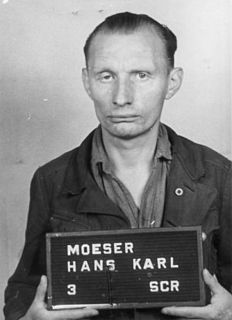 W
WHans Karl Moeser was a German SS functionary during the Nazi era who served at the Neuengamme, Auschwitz and Mittelbau-Dora concentration camps. He was captured at the end of the war and tried by the United States Military Government Court. The only one among 19 defendants at the Dora Trial sentenced to death, Möser was executed at Landsberg Prison in 1948.
 W
WHans Wilhelm Münch was a German Nazi Party member who worked as an SS doctor during World War II at the Auschwitz concentration camp from 1943 to 1945 in German occupied Poland.
 W
WErich Mußfeldt, was a German war criminal, an SS NCO who served in two extermination camps during World War II in occupied Poland: Auschwitz and Majdanek. He was arrested and charged by the Allies originally in 1946, then transferred to Poland where the full extent of his war crimes was revealed thanks to new evidence. He was retried by the Supreme National Tribunal at the Auschwitz Trial in Kraków, and found guilty of crimes against humanity. Muhsfeldt was sentenced to death by hanging in December 1947, and executed on 24 January 1948.
 W
WRobert Karl Ludwig Mulka was an SS-Obersturmführer. At Auschwitz concentration camp, he was adjutant to the camp commandant, SS-Obersturmbannführer Rudolf Höss, making him second in command of the camp.
 W
WDetlef Nebbe was an SS-Hauptscharführer and member of staff at Auschwitz concentration camp. He was prosecuted at the Auschwitz Trial.
 W
WAlice Orlowski was a German concentration camp guard at several of the Nazi German camps in occupied Poland during World War II. After the war, she was convicted of war crimes.
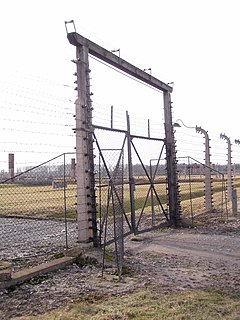 W
WOn the night of 5 April 1944, Siegfried Lederer, a Czech Jew, escaped from the Auschwitz concentration camp wearing an SS uniform provided by SS-Rottenführer Viktor Pestek. Because of his Catholic faith and infatuation with Renée Neumann, a Jewish prisoner, Pestek opposed the Holocaust. He accompanied Lederer out of the camp, and the two men traveled together to the Protectorate of Bohemia and Moravia to obtain false documents for Neumann and her mother.
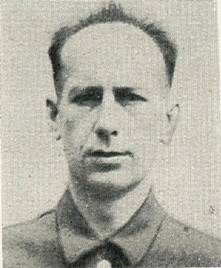 W
WLudwig Plagge was an SS-Oberscharführer and member of staff at Auschwitz, Buchenwald and Majdanek concentration camps. He was prosecuted at the Auschwitz Trial, and executed for war crimes.
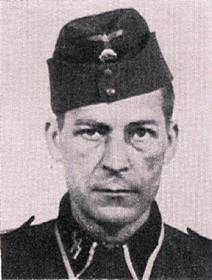 W
WFranz Romeikat was an SS-Unterscharführer and staff member at Auschwitz concentration camp. He was prosecuted in the Auschwitz Trial.
 W
WVinzenz Schöttl was a German Schutzstaffel (SS) officer and high-ranking functionary in the Nazi concentration camps.
 W
WRichard Schröder was an SS-Unterscharführer and member of staff at Auschwitz concentration camp. He was prosecuted at the Auschwitz Trial.
 W
WHorst Schumann was an SS-Sturmbannführer (major) and medical doctor who conducted sterilization and castration experiments at Auschwitz and was particularly interested in the mass sterilization of Jews by means of X-rays.
 W
WHeinrich Schwarz was an SS-Hauptsturmführer (captain) and concentration camp officer who served as commandant of Auschwitz III-Monowitz in Nazi-occupied Poland and Natzweiler-Struthof in Alsace-Lorraine.
 W
WJohann Schwarzhuber was a German SS-Obersturmführer, who was in charge of various subcamps during World War II. His positions included the Schutzhaftlagerführer of the Auschwitz-Birkenau men's camp, where he oversaw the selection process for the gassing of thousands of detainees. He was later transferred to the Ravensbrück concentration camp, where he held the post of the Lagerdirektor, second only to the overall camp commander Fritz Suhren. With Suhren on the run, Schwarzhuber was the highest-ranking defendant during the first Ravensbrück trial. In front of the British military tribunal he was indicted for war crimes, sentenced to death and subsequently executed in 1947.
 W
WSolahütte was a little-known resort in Poland for the Nazi German guards, administrators, and auxiliary personnel of the Auschwitz/Birkenau/Buna facilities during the Holocaust in occupied Poland. Although postcards of the era sent by German staff sometimes bore the mysterious pre-printed return address "SS Hütte Soletal", the rustic hamlet remained largely unknown to historians until 2007, when the Höcker Album of memorabilia owned by SS officer Karl-Friedrich Höcker including vintage Auschwitz photographs was donated to the United States Holocaust Memorial Museum, which then released images from the album online for study. Some of the photographs identified Solahütte for the first time.
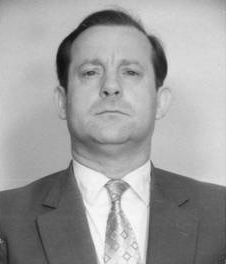 W
WHans Stark was an SS-Untersturmführer and head of the admissions detail at Auschwitz-II Birkenau of Auschwitz concentration camp.
 W
WHeinz Thilo was a German SS officer and a physician in the Nazi concentration camp Auschwitz.
 W
WAnton Thumann was a member of the SS of Nazi Germany who served in various Nazi concentration camps during World War II. After the war, Thumann was arrested by British occupation forces and charged with crimes against humanity. At the Neuengamme Camp Case No. 1 in 1946 he was found guilty, sentenced to death and executed at Hamelin prison.
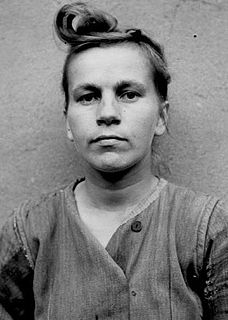 W
WElisabeth Volkenrath was a German supervisor at several Nazi concentration camps during World War II.
 W
WEduard Wirths was the Chief SS doctor (SS-Standortarzt) at the Auschwitz concentration camp from September 1942 to January 1945. Thus, Wirths had formal responsibility for everything undertaken by the nearly 20 SS doctors who worked in the medical sections of Auschwitz between 1942–1945.